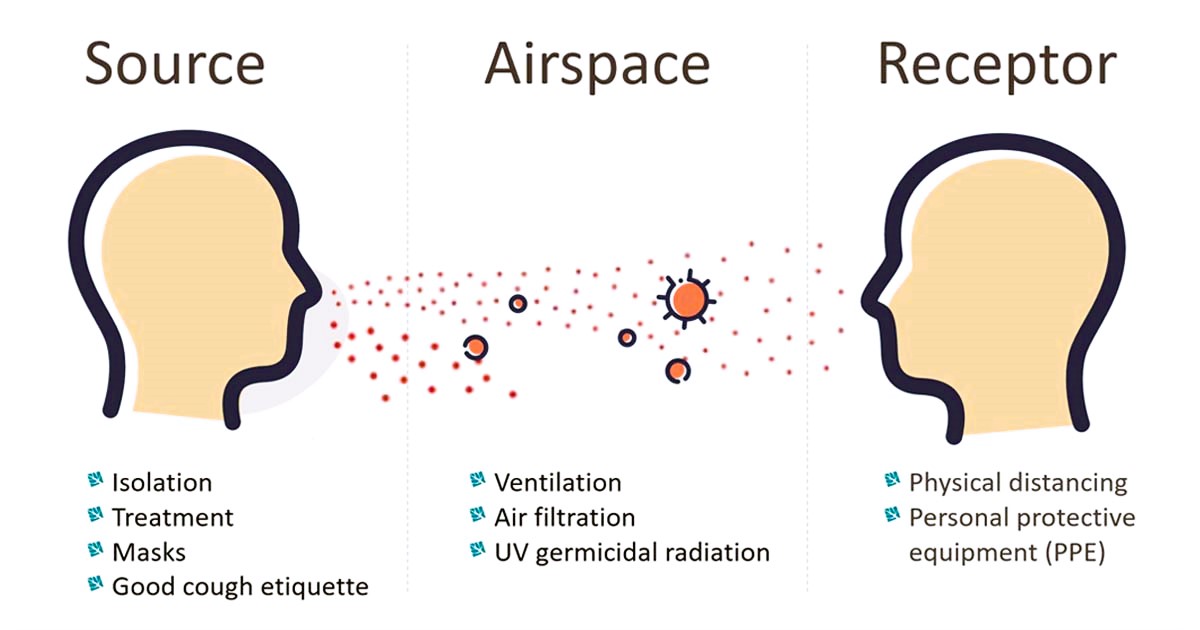The COVID-19 pandemic has brought unprecedented challenges to global public health. One aspect that has garnered significant attention is the airborne transmission of the virus. Understanding how the virus spreads through the air and implementing effective decontamination strategies are crucial components in mitigating its impact. In this article, we delve into the intricacies of airborne transmission of COVID-19 and explore strategies for decontamination to create safer indoor environments.
Airborne Transmission: An Overview
Airborne transmission refers to the spread of respiratory droplets containing infectious particles through the air. In the context of COVID-19, the virus primarily spreads through respiratory droplets released when an infected person talks, coughs, or sneezes. These droplets can vary in size, and while larger droplets may fall to the ground quickly, smaller droplets can remain suspended in the air for an extended period, increasing the risk of transmission in enclosed spaces.
Key Considerations for Airborne Transmission:
- Particle Size: Respiratory droplets carrying the virus come in a range of sizes. Larger droplets typically settle on surfaces or ground quickly, while smaller particles can remain airborne for an extended time, increasing the risk of inhalation by individuals in the vicinity.
- Ventilation: Poor ventilation in indoor spaces contributes to the buildup of airborne particles. Adequate ventilation, through natural or mechanical means, helps disperse and dilute the concentration of infectious particles, reducing the risk of transmission.
- Duration of Exposure: Prolonged exposure to an infected individual in an enclosed space increases the likelihood of transmission. Shortening the duration of exposure, especially in crowded or poorly ventilated settings, is a critical preventive measure.
Decontamination Strategies

- Surface Cleaning: While airborne transmission is a significant concern, the virus can also land on surfaces and remain viable for varying durations. Regular cleaning and disinfection of frequently touched surfaces, such as doorknobs, light switches, and countertops, help mitigate the risk of surface transmission. Disinfection of schools and public schools with asbestos, more about this in our article.
- Air Purification Systems: Installing air purification systems, such as High-Efficiency Particulate Air (HEPA) filters or ultraviolet (UV) germicidal irradiation systems, can help trap or neutralize airborne particles. These systems are particularly beneficial in enclosed spaces with limited ventilation.
- Ventilation Improvement: Enhancing ventilation is crucial in reducing the concentration of airborne particles. This can be achieved by increasing outdoor air exchange, using air filters, and ensuring that ventilation systems are properly maintained.
- Personal Protective Equipment (PPE): For individuals working in high-risk environments or in close contact with potentially infected individuals, wearing appropriate PPE, such as masks and face shields, provides an additional layer of protection against airborne transmission.
- Social Distancing: Maintaining physical distance from others, especially in enclosed spaces, helps minimize the risk of exposure to respiratory droplets. This is particularly important in settings where maintaining adequate ventilation may be challenging.
Standards and Guidelines
For comprehensive information on COVID-19, including airborne transmission, decontamination strategies, and related standards, refer to reputable sources such as Wikipedia for general knowledge.
As our understanding of COVID-19 evolves, addressing the challenges posed by airborne transmission becomes increasingly vital. Implementing effective decontamination strategies, improving ventilation, and adhering to recommended standards and guidelines are essential steps in creating safer indoor environments. By staying informed and adopting evidence-based practices, individuals and communities can contribute to mitigating the impact of airborne transmission and protecting public health.


